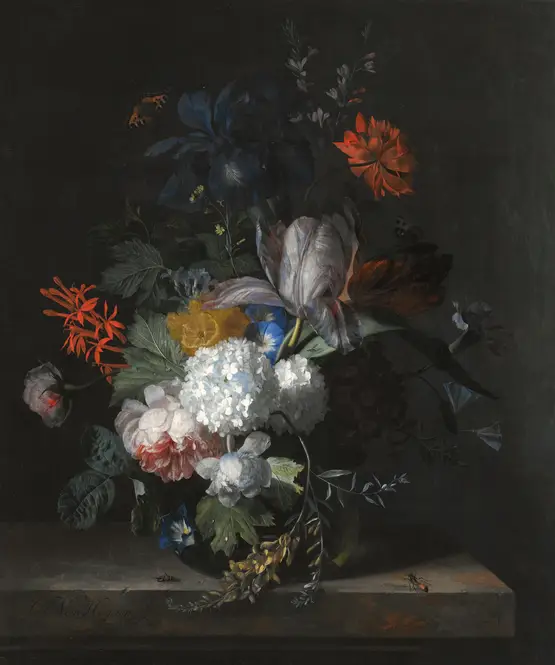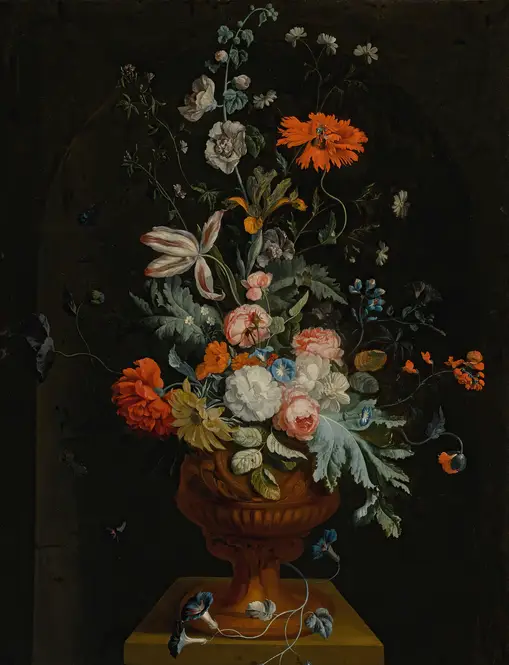-
-full.webp)
Flowers in an Urn (c. 1720-1722)
A luminous still-life where flowers burst from an ornate urn, their petals rendered with astonishing detail against a shadowy background.
-

A Still Life With Hydrangea, Convolvulus, Polyanthus, Peonies, Auricula, Carnation, Tulips, Snowballs And Other Flowers In A Glass Vase
A lavish still life where flowers tumble from a glass vase, each petal painted with astonishing detail, balancing vibrancy and decay.


-full.webp)
-full.webp)